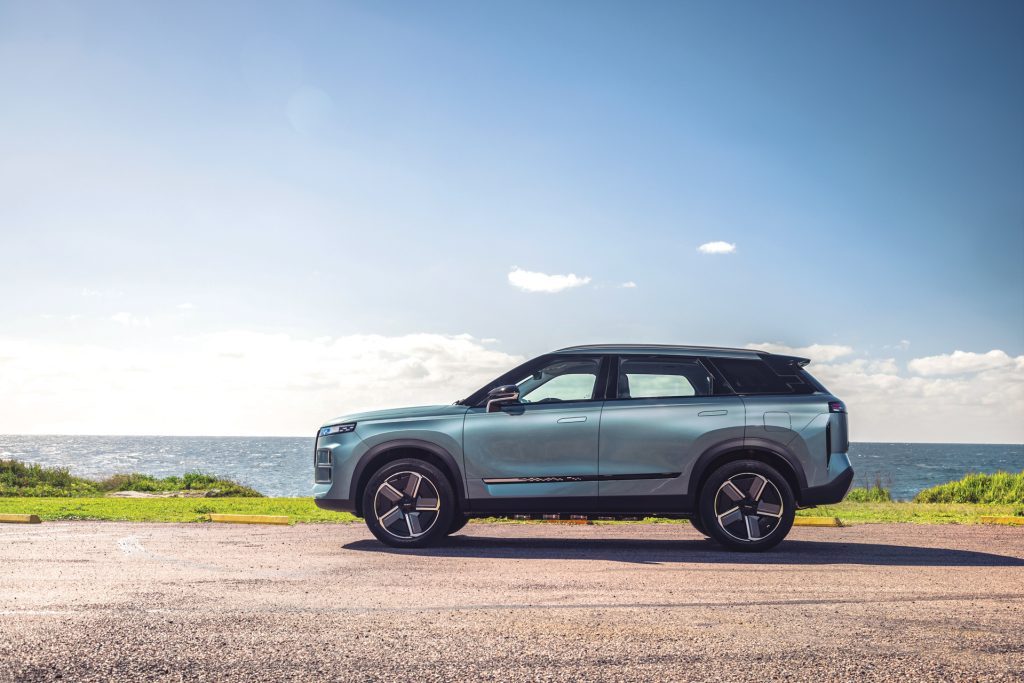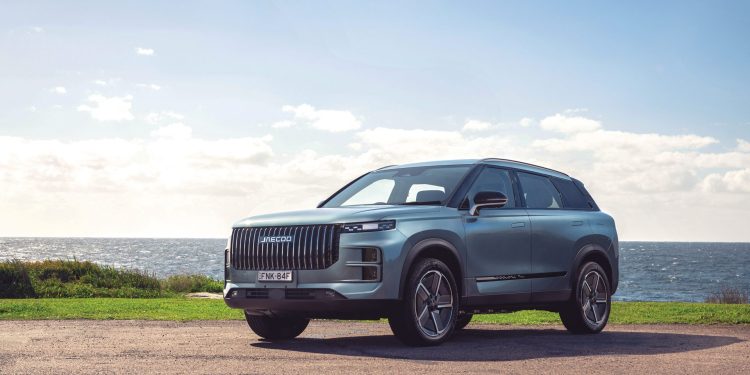2025 Jaecoo J7 SHS EX Review
Words: Peter Louisson | Photos: Supplied
The Jaecoo J7 has been available locally in FWD or AWD variants, both using a 135kW/275Nm 1.5T engine under the hood. Fuel use is a claimed 7.8L/100km, and they kick off from $38k.
Well now the J7 PHEV version has arrived. Known as the J7 SHS, the abbreviation refers to its Super Hybrid System. It’s a FWD-only model that sells for $49,990 which is $11k up on the J7 FWD variant. But fuel use is a stated 1L/100km. Moreover, it has 1200km of claimed range.
With the added motor and battery, it also weighs in almost 250kg heavier. So despite having more system power of 255kW and 525Nm from its Miller cycle 1.5T engine (105kW/215Nm) and its 150kW/310Nm electric motor, it isn’t quite as brisk as the base Jaecoo J7 (claim 8.5 versus 8.0sec). Still, most people would happily trade a little acceleration for a massive potential improvement in fuel use (down towards zero).
On the tests we did, the SHS delivered a best overtaking time of five sec flat versus 5.5sec for the EX. So it’s swings and roundabouts. We’d rather have the better overtaking ability for safety reasons.
And on that, this has a five-star ANCAP crash test rating. However, it only applies to this variant, not the other J7s. As a point of interest, ANCAP calls this a small SUV, but we’d say it’s more like a compact to medium offering, being 4500mm long.
EV mode is super
It’s actually the way this goes in electric mode that should have would-be EV buyers interested. The motor driving the front wheels is a beaut, performing well even in the default Eco mode. It’s better yet in Normal or Sport but for town use, leave it in Eco. And with an 18kWh LFP battery tucked under the tail it has the potential to do around 106km of emissions-free running. Count on more like 90km WLTP. Still, that’s not far off a week’s worth of around town mooching before a recharge is needed. And being a small battery, you can achieve that handily overnight. If you’re in a hurry, it will hook up to public chargers of up to 40kW, and take around 20min to replenish from 30-80 per cent. Why 30 per cent? Because once it gets down to that level, the system starts to recharge the battery using the engine. That’s not great for fuel economy but it does mean that you never run out of motor power so this and the engine can work together when necessary.
This isn’t big on regen, oddly; even in the highest setting brake effect into corners is only modest, so we left it on high.
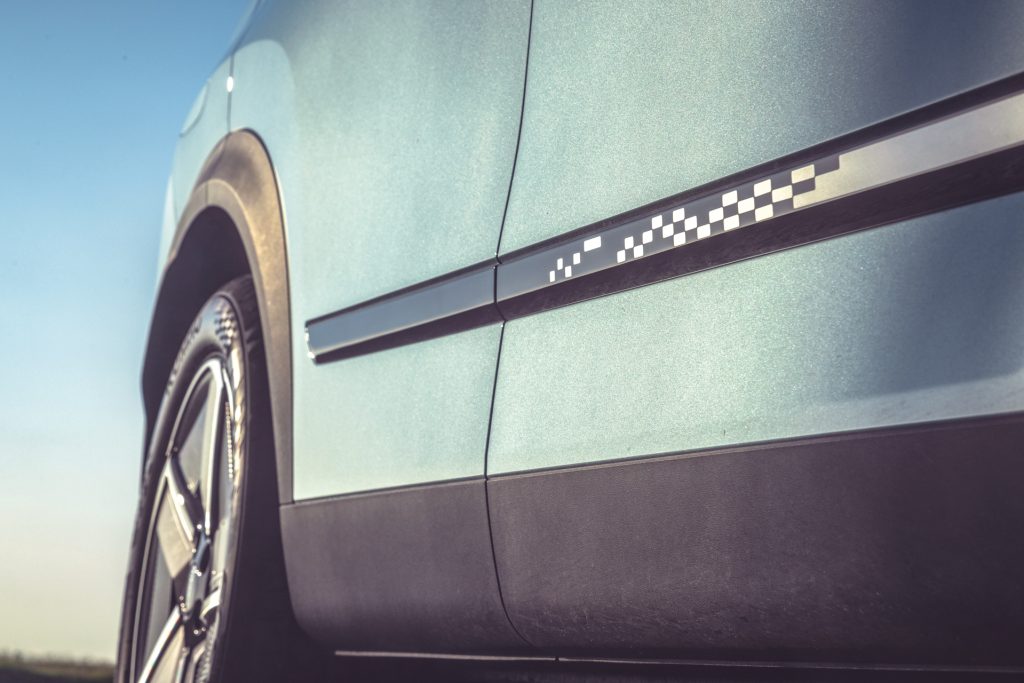
Fuel miser
Can this really return 1L/100km? Not quite but we did get close. If you live and work in a big metro area the engine should seldom switch on. Small wonder Kiwis are taking more interest in PHEVs as their electric range increases.
We used the J7 as an EV over the weekend, tooling around town, and fuel use sank as low as 1.9L/100km. Back on the open road and the battery eventually ran down to its 30 per cent minimum whereupon the engine then goes about keeping it there. You can also hold charge for later use if you want. Alternatively, if you’re down to 30 per cent and need to rejuice the battery you can do that on the go. But expect fuel economy to suffer, with a figure in the 9s for us. Fortunately, it runs on 91ULP, and you won’t have to do this often. However, it doesn’t take long to get back to 80 per cent, roughly an hour of open road running. Not ideal of course. But just saying, it is possible.
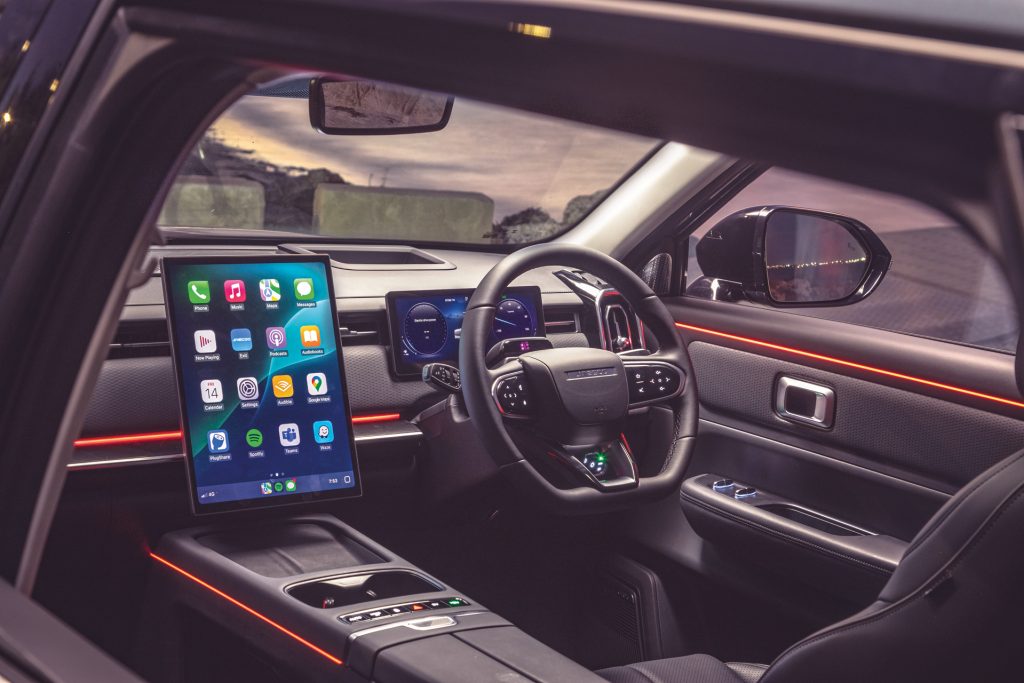
Spacious enough
This is right sized for many. Big enough to fit three in the back – a completely flat floor helps – and with decent leg and headroom. Open the powered fifth door and there’s 340L of gear space, expanding to 1265L. That’s less than the other J7s have because of the underfloor battery pack.
We like that it unlocks and relocks automatically so long as you’ve pocketed the proximity key. At unlock, the door handles extend for ease of access. Exit is simple as seats retract by themselves, also facilitating ingress. Said seats feel cushy too and are finished in artificial leather.
On the go, this has a naggy distraction minder but you can cancel that. Likewise other chiming annoyances and they stay quiet. The steering weight is a bit light and weighting also feels digital. Turn off lane keeping to improve things.
Unlike many offerings from China, this doesn’t have squishy suspension for a soft and rolly ride. It’s fully independent at both ends and the balance leans more towards body control than pampering. Progress is relatively quiet too.
A couple of other spec notables include a 360 degree surround monitor (helpfully comes on when turning), a head-up display, heated seats, a column-mounted gear selector, wireless cell phone hook-up, 19-inch alloys and seven years of factory warranty.
In this area, the smaller Eclipse Cross VRX plug-in sells for similar money but is 4wd. Otherwise, there’s the closely related Tiggo 7 in two spec guises, both slightly less expensive. This looks more interesting, arguably.
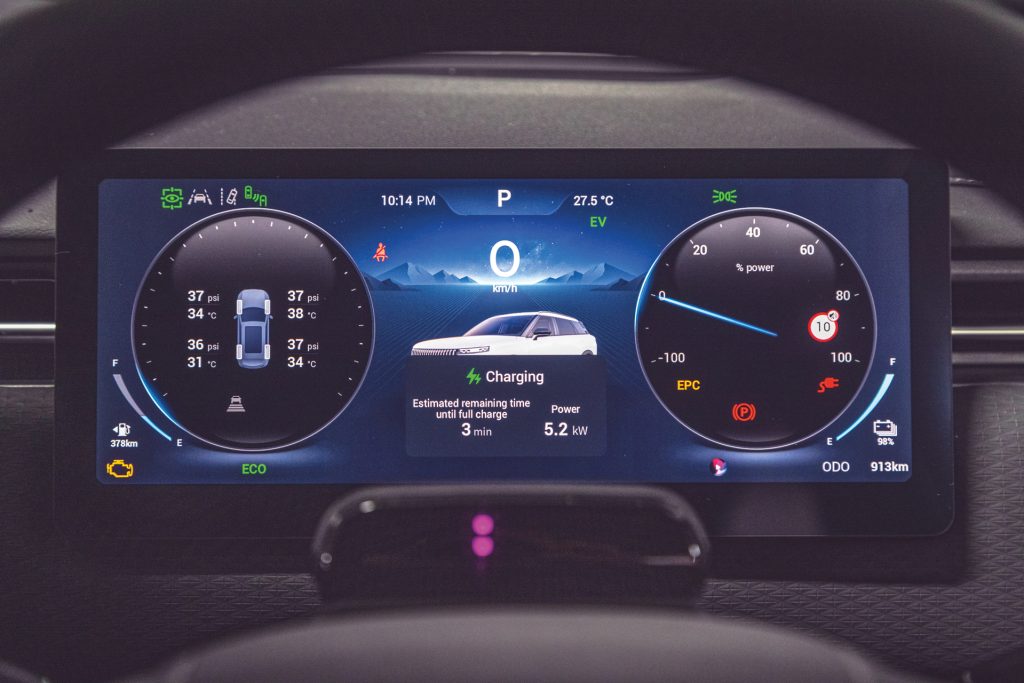
Jaecoo J7 SHS EX
$49,990 / 1.0L/100km / 31g/km
0-100 km/h 8.76s
Engine 1.5 / IL4 / T
Max power 105kW@5200rpm
Max torque 215Nm@2500rpm
Motor 150kW / 310Nm
Hybrid output 225kW / 525Nm
Transmission 1-speed dedicated hybrid, FWD
Weight (claimed) 1794kg
